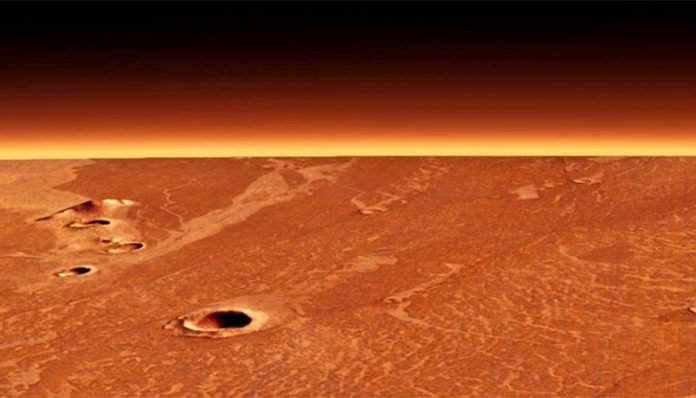
Mars, often thought of as a quiet and inactive planet, has recently shown us a more lively side.
Researchers from the University of Arizona made an intriguing discovery on a large, flat area on Mars called Elysium Planitia.
They found that this region has a much more active geological history than we thought.
In fact, there were huge volcanic eruptions here as recently as one million years ago. These eruptions covered an area almost as big as Alaska!
Unlike Earth, which has shifting plates on its surface, Mars doesn’t have this kind of plate tectonics. This led scientists to believe Mars was geologically “dead.” However, recent studies are challenging this idea.
For example, last year, a team from the same university found signs of a big mantle plume under Elysium Planitia.
A mantle plume is a column of hot rock rising from deep within a planet, and it can cause volcanic and earthquake activity. This finding suggests that there was a lot of volcanic action in this area not too long ago.
In the latest research, Joana Voigt and Christopher Hamilton, along with their team, used images from spacecraft and ground-penetrating radar to create a detailed 3D map of every lava flow in Elysium Planitia.
They discovered over 40 volcanic events. One of the largest flows filled a valley named Athabasca Valles with almost 1,000 cubic miles of lava.
Elysium Planitia is now known as the youngest volcanic area on Mars. Studying it helps us understand not just Mars’ past but also its recent history involving water and volcanoes.
Even though we haven’t seen active volcanoes on Mars, the numerous Marsquakes recorded by NASA’s InSight lander from 2018 to 2022 suggest that Mars is far from being a dead planet.
The recent study offers the most detailed account of volcanism on a planet other than Earth, covering the last 120 million years.
This period is significant because it’s the same time when dinosaurs were thriving on Earth.
This research also sheds light on the possibility of life on Mars. Elysium Planitia had several large floods, and the lava there interacted with water or ice. This interaction could have created environments suitable for life.
The team found evidence of steam explosions, which are interesting for astrobiologists. These scientists study life in space and are intrigued by conditions that could support life.
To gather their data, the team used images from NASA’s Reconnaissance Orbiter and Mars Orbiter Laser Altimeter, along with radar measurements from NASA’s Shallow Radar probe. This allowed them to look up to 140 meters (460 feet) below the surface.
Combining these datasets gave them a 3D view of the area, including what it looked like before the volcanic eruptions.
Understanding Mars’ interior and how water has moved around on the planet is crucial. Since Elysium Planitia is easier to land on than other parts of Mars, learning about water here is important for future human missions. These missions will need water to survive.
Voigt compares the lava flow surfaces to “open books” full of information. Areas like Elysium Planitia, once thought to be boring, may hold many secrets about Mars’ past.
The team plans to continue using complex datasets to create detailed 3D views of the Martian surface and its history. Their work could reveal even more about the dynamic and active nature of the Red Planet.



